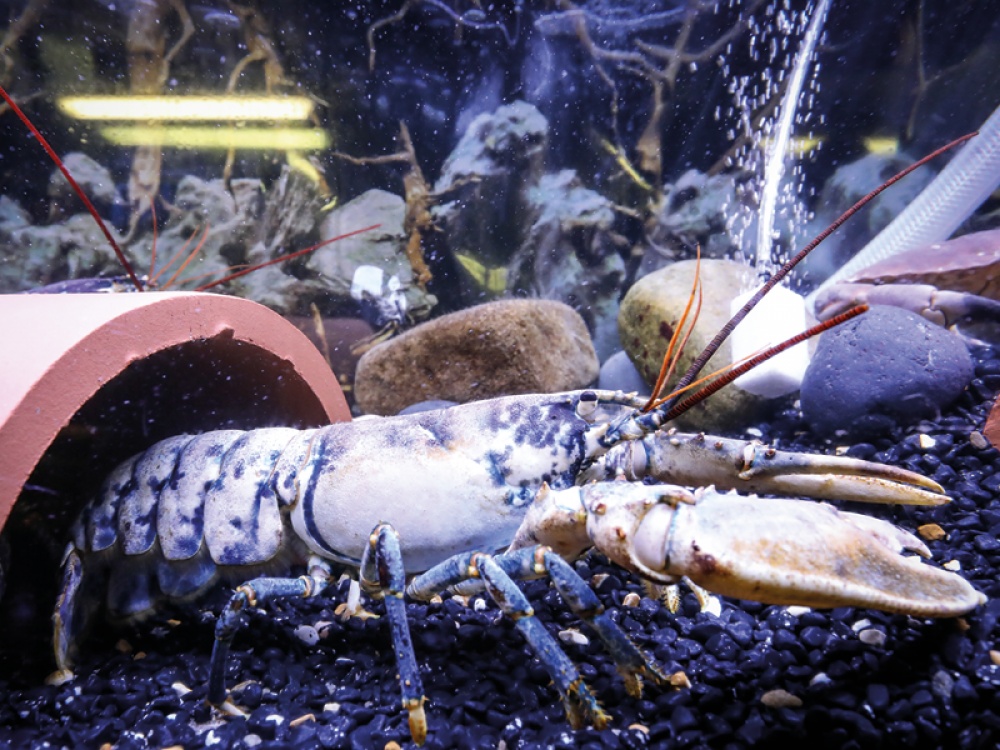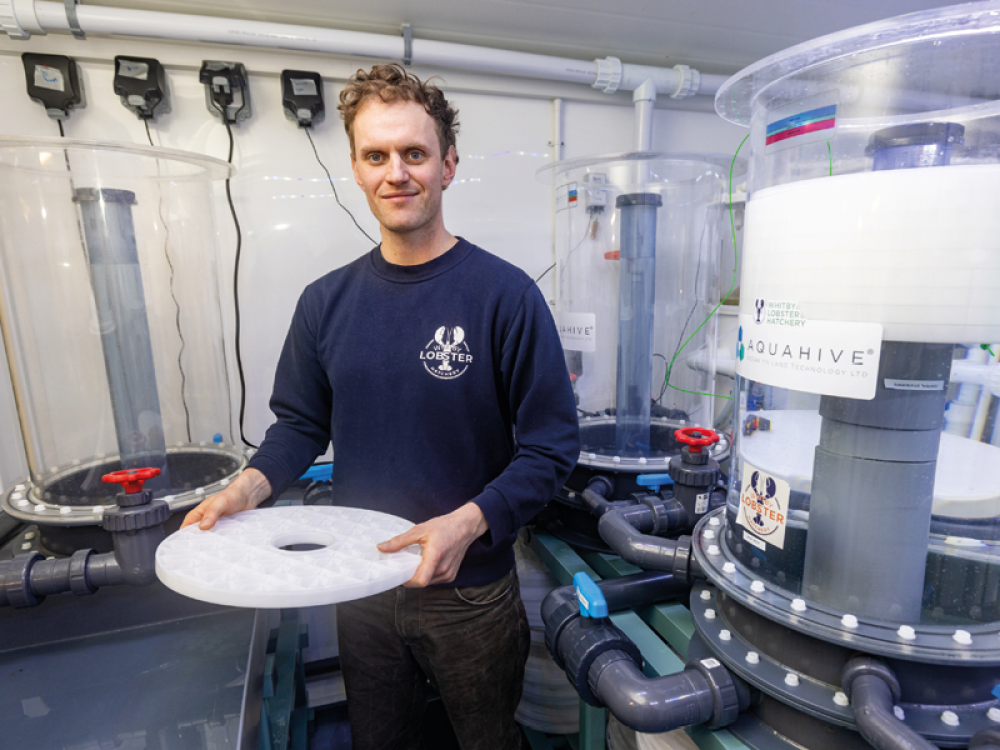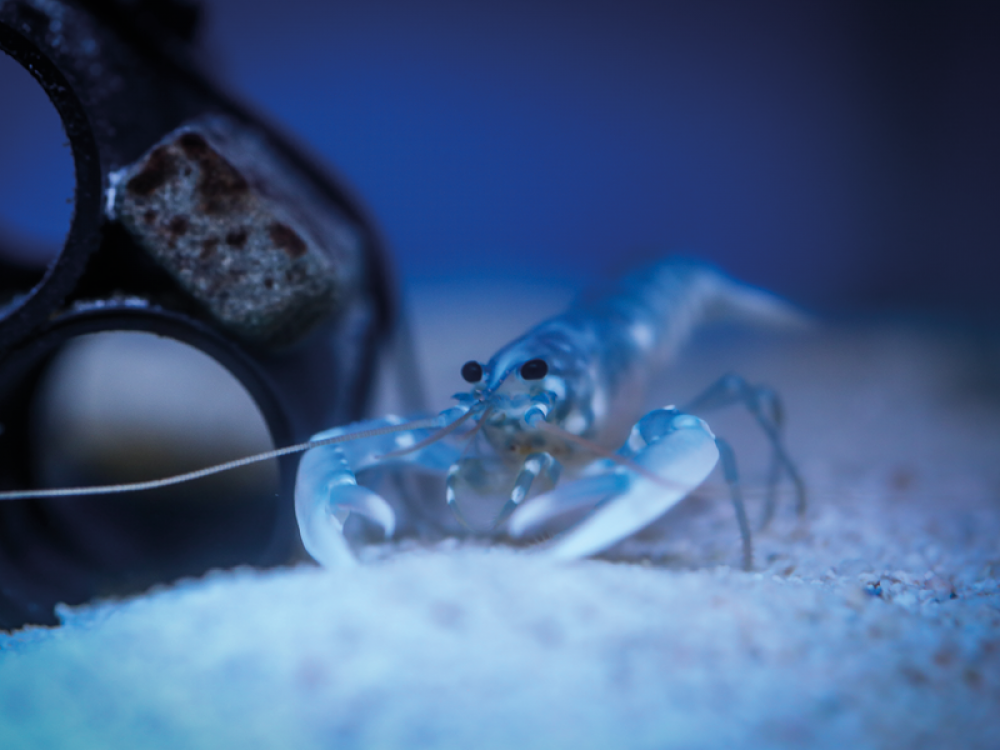We Learn How Whitby Lobster Hatchery is Fighting to Keep the Seaside Town's Fishing Heritage Alive

An ambitious new marine project in Yorkshire is hoping to release 100,000 juvenile lobsters into the North Sea every year, with the aim of increating their survival rate by up to 50 percent and conserving the local lobster population
Fishing has long been part of Whitby’s heritage and the seaside town was once known as the herring capital of the world. Today, the fisherfolk of the town rely on crab and lobsters to keep them in business, but with increasing pressures and growing competition, despite the high demand for fresh lobster, the industry could face a disastrous decline if sources start to dry up.
The old saying ‘there’s plenty more fish in the sea’ doesn’t apply to lobsters, as although lobsters can produce up to 20,000 eggs per cycle, statistically less than one percent of the larvae released into the water survive. That’s where Whitby Lobster Hatchery come in. They are trying to protect Yorkshire’s fishing industry and regain an ecological balance, ensuring the lobster population is protected. We caught up with Joe Redfern, general manager at the hatchery, to find out more.
‘I moved to Whitby to start working for the Northeastern Fisheries Conservation Authority, who are the local government agency which manages the fish stocks and they do some conservation enforcement as well. I studied marine biology before [joining them] and travelled around the world working in dive centres, but I wanted to come back to Yorkshire because I grew up in Leeds and I wanted to see if I could do marine biology here,’ Joe says.
Read More: How Make It Wild Are Creating New Wild Spaces Across Yorkshire

When lockdown hit Joe started working as a commercial fisherman potting lobsters off Whitby’s coast, and heard about the plans to open a lobster hatchery. ‘I managed to speak to the right people, including Terry Pearson who is the lobster merchant here in Whitby and has the lease on the building for the hatchery,’ Joe explains. After getting involved, Joe and the team began crowd funding to get local support to get the hatchery off the ground. Two years on, the hatchery is now up and running and they’re hoping to open the visitor centre this August.
‘There is a pattern which has occurred along the whole of the North East coast where we have come away from fishing for white fish, and now pot for crabs and lobsters, which supports the vast majority of the fishing industry now. It’s such an important industry for our coastal communities and it’s important to protect that for the future as 90 percent of fishermen are reliant on healthy crab and lobster pots for their income,’ Joe explains.
Today, Whitby's fleet of potting boats catch around 100,000 lobster each year, but at the current survival rate for lobster larvae, it is possible there will not be enough lobsters for the industry to continue. The hatchery are hoping to off-set this by developing the larvae safely in the hatchery, where Joe and the team can eliminate many early risks by protecting the eggs as they develop into juvenile lobsters when they will be mature enough to be independent, bottom-dwelling creatures. This intervention will dramatically increase the survival rate by up to 30 to 50 percent.
Read More: How this Historic Mill in Skipton is Helping to Re-establish a Rare Breed of Yorkshire Bees
‘The project is very much born out of the desire from the fishing industry to try and become more sustainable and resilient for the future. We work with the fishermen to get what they call berried hens which are the egg-bearing females, and we let the larvae hatch from the eggs in the hatchery,’ Joe explains. The hatchery then protects the juvenile lobsters from predators, storms and other factors such as bacteria which young lobsters are very susceptible to. ‘In the wild the larvae have a really low chance of survival, so we protect them, giving them the diet they need to boost their chance of survival and once they are ready, we release the juvenile lobsters into the sea where they will fortify the existing lobster population year-on-year,’ Joe adds.
Juvenile lobsters take five to seven years to grow to market size and in this time will reach maturity and begin to release their own eggs. Whitby Lobster Hatchery believe their method of conservation, alongside effective management, will protect the lobster fishing industry and secure jobs for Whitby’s fishing fleet into the future.
‘It’s such an important industry for our coastal communities and it’s important to protect that for the future as 90 percent of fishermen are reliant on healthy crab and lobster pots for their income’

The hatchery released 343 juveniles on the seaward side of East Pier earlier this year, however the aim is to be able to release 100,000 every year. ‘The idea for that number comes from the amount of lobsters currently landed in Whitby, and we’ve designed the system to be able to meet that capacity,’ Joe adds.
Protecting the lobsters and helping them mature before releasing them back into the sea is only one part of the three core values Whitby Lobster Hatchery have set out. As well as conservation, the team want to carry out research, and educate visitors through the new visitor centre.
On Pier Road, the hatchery has transformed an unused fish auction shed into a state-of-the-art hatchery system, but it will also be used as an institute of marine conservation research in partnership with local universities. ‘It’s a brilliant location for multiple reasons. For one it’s centred in the middle of Whitby, and once the visitor centre opens we will hopefully get lots of tourists visiting. A lot of the ethos behind the project is trying to marry up the usually two distinct fields of fishing and conservation, and being situated in the fish market is a really good opportunity for us to bring those two things together. It will help visitors learn about what we’re doing here and we’ll be able to do research from here as well,’ Joe explains.
Read More: See the Hoodies Inspired by Yorkshire Air Ambulance's Life-Saving Work
The hatchery may not yet be open to the public, but Joe says people are already keen to see what’s going on. ‘There is lots of interest from different groups, such as schools, who want to come and learn about what we’re doing,’ he says. ‘But it’s always a challenge to get funding and we’ve been doing this through the pandemic, the cost of living crisis and through the mass North East fish mortalities. These have all thrown up different challenges in terms of funding and increasing costs,’ he adds. ‘There was real loss of hope for the future when the mass mortalities occurred and many people thought there would be no fishery left. However we worked really closely with the fishing industries throughout that period to try and understand why it happened and make sure it doesn’t happen again.’
Once the hatchery is fully complete and the visitor centre is open, Joe hopes they will be able to build upon the work they have already started. ‘Long term there is lots we can do; working with universities, looking into genetics, working with the fishing industry and with wind farm groups,’ he says. ‘There is a lot we can do inside the hatchery too, aside from releasing the lobsters, and I see it as being a hub for driving research and connecting fisherman with vital research and conservation. As a charity there is lots we can do outside the hatchery too, like habitat remediation, [creation of] artificial reefs and fishery management of other species,’ he adds. But for now, the focus is on the conservation of lobsters and ensuring the lobster fishing industry in Yorkshire is protected and resilient for the future.







